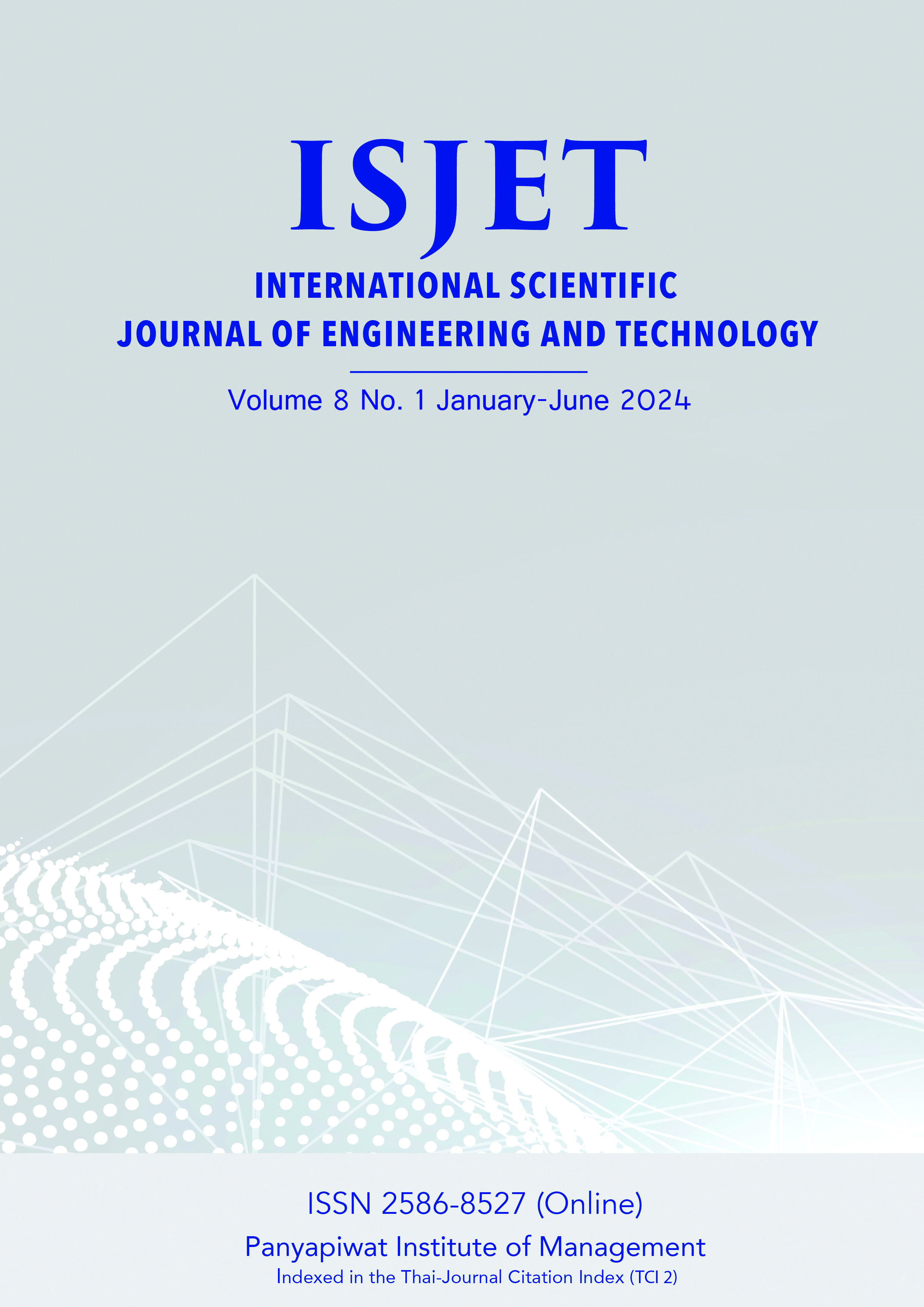Enhanced Autonomous Driving: PrediNet20 with AHLR for Improved Performance
Main Article Content
Abstract
In the continually evolving field of autonomous driving, enhancing model prediction accuracy and addressing noisy data remain pivotal challenges. This study introduces PrediNet20, a customized end-to-end Convolutional Neural Network (CNN) designed for the Donkey Car platform. PrediNet20 aims to alleviate the limitations of current deep learning models by improving accuracy in predicting throttle and steering angles, crucial components in autonomous driving systems. At the core of this enhancement is the introduction of AHLR, a novel adaptive loss function that enhances model training and generalization. It dynamically adjusts the loss based on the prediction error, facilitating a smooth transition from quadratic to linear loss. Coupled with the application of L1 regularization, it aids in reducing overfitting, potentially enhancing the model’s resistance to data noise and outliers. Preliminary experiments using real driving data indicate that compared to existing models, PrediNet20 demonstrates approximately a 33.3% improvement in convergence speed, a 37.5% improvement in stability, a 10% improvement in robustness, and a 50% improvement in generalization. PrediNet20 offers higher accuracy and faster convergence, marking a significant step forward
in the development of more reliable autonomous driving systems.
Article Details

This work is licensed under a Creative Commons Attribution-NonCommercial-NoDerivatives 4.0 International License.
เนื้อหาข้อมูล
References
M. Bojarski, D. Del Testa, D. Dworakowski et al. (2016, Apr. 25). End to End Learning for Self-Driving Cars. [Online]. Available: https://arxiv.org/abs/1604.07316
R. S. Ferreira, “Towards Safety Monitoring of ML-Based Perception Tasks of Autonomous Systems,” in Proc. IEEE, ISSREW, 2020, pp. 135-138.
D. Fang, C. Haase-Schutz, L. Rosenbaum et al., “Deep MultiModal Object Detection and Semantic Segmentation for Autonomous Driving: Datasets, Methods, and Challenges” IEEE Transactions on Intelligent Transportation Systems, vol. 22, no. 3, pp. 1341-1360, Feb. 2020.
F. Nesti, G. Rossolini, S. Nair et al., “Evaluating the Robustness of Semantic Segmentation for Autonomous Driving Against Real-World Adversarial Patch Attacks” in Proc. IEEE/CVF, WACV, 2022, pp. 2280-2289.
Y. Li and J. Qu, “MFPE: A Loss Function Based on Multi-task Autonomous Driving,” ECTI Transactions on Computer and Information Technology (ECTI-CIT), vol. 16, no. 4, pp. 393-409, Oct. 2022.
A. Ramisa, F. Yan, F. Moreno-Noguer et al., “Breaking News: Article Annotation by Image and Text Processing,” IEEE Trans. Pattern Anal. Mach. Intell., vol. 38, no. 12, pp. 2487-2500, Dec. 2016.
D. Shukai and J. Qu. “Research on Multi-tasking Smart Cars Based on Autonomous Driving Systems,” SN Computer Science, vol. 4, no. 3, p. 292, Mar. 2023.
Z. Jing, P. Li, B. Wu et al., “An Adaptive Focal Loss Function Based on Transfer Learning for Few-Shot Radar Signal Intra-Pulse Modulation Classification,” Remote Sens., vol. 14, no. 8, p. 1950, Aug. 2022.
V. Ghodrati, J. Shao, M. Bydder et al., “MR Image Reconstruction Using Deep Learning: Evaluation of Network
Structure and Loss Functions,” Quant. Imaging Med. Surg., vol. 9, no. 9, pp. 1516-1527, Sep. 2019.
H. Lai, L. Chen, W. Liu et al., (2023, Nov.23). “STC-YOLO: Small Object Detection Network for Traffic Signs in Complex Environments,” Sensors, vol. 23, no. 11, Jun. 2023.
M. Patel and H. Elgazzar. (2023, Apr. 18). Classification of Road Objects Using Convolutional Neural Networks. [Online]. Available: https://dx.doi.org/10.1109/CCWC57344.2023.10099093
M. Bechtel, E. McEllhiney, and H. Yun. (2017, Jan. 10). DeepPicar: A Low-Cost Deep Neural Network-Based Autonomous Car. [Online]. Available: https://dx.doi.org/10.1109/RTCSA.2018.00011
J. Maanpää, J. Taher, P. Manninen et al., (2021, May. 5). Multimodal End-to-End Learning for Autonomous Steering in
Adverse Road and Weather Conditions. [Online]. Available: https://dx.doi.org/10.1109/ICPR48806.2021.9413109
S. Azam, F. Munir, M. Rafique et al. (2020, Jan. 1). N2C: NeuralNetworkController Design UsingBehavioralCloning.
[Online]. Available: https://dx.doi.org/10.1109/tits.2020.3045096
A. Loquercio, A. I. Maqueda, C. R. del-Blanco et al. (2018, Jan. 22). DroNet: Learning to Fly by Driving. [Online]. Available: https://dx.doi.org/10.1109/LRA.2018.2795643
Y. Tian, K. Pei, S. Jana et al., “DeepTest: Automated Testing of Deep-Neural-Network-Driven Autonomous Cars,” ACM Trans. Embed. Comput. Syst., vol. 16, no. 4, pp. 1-22, Apr. 2017.
J. Kocic, N. Jovićić, and V. Drndarević. “An End-to-End Deep Neural Network for Autonomous Driving Designed for Embedded Automotive Platforms,” in Proc. MDPI, 2019, pp. 1-26.
M. Bechtel, E. McEllhiney, and H. Yun. (2017, Jul. 30). DeepPicar: A Low-Cost Deep Neural Network-Based Autonomous Car. [Online]. Available: https://arxiv.org/abs//1712.08644
D. Feng, L. Rosenbaum, and K. Dietmayer, “Towards Safe Autonomous Driving: Capture Uncertainty in the Deep Neural Network for Lidar 3D Vehicle Detection,” in Proc. 2018 21st Int. Conf. on Intelligent Transportation Systems (ITSC), 2018, pp. 3266-3273.
M. Bechtel, E. McEllhiney, and H. Yun. (2019, Aug. 10). DeepPicar: A Low-Cost Deep Neural Network-Based Autonomous Car. [Online]. Available: https://dx.doi.org/10.1109/RTCSA.2018.00011
D. Chicco, M. J. Warrens, and G. Jurman, “The Coefficient of Determination R-squared is More Informative than SMAPE,
MAE, MAPE, MSE, and RMSE in Regression Analysis Evaluation,” PeerJ Computer Science, vol. 7, no. 7, p. e623, Jan. 2021.
J. Kocic, N. Jovićić, and V. Drndarević, “An End-to-End Deep Neural Network for Autonomous Driving Designed for Embedded Automotive Platforms,” Sensors, vol. 19, no. 9, p. 2064, May. 2019.
C. J. Willmott and K. Matsuura, “Advantages of the Mean Absolute Error (MAE) Over the Root Mean Square Error (RMSE) in Assessing Average Model Performance,” Clim. Res., vol. 30, no. 1, pp. 79-82, 2005.
G. P. Meyer, “An Alternative Probabilistic Interpretation of the Huber Loss,” in Proc. 2021 IEEE/CVF Conference on Computer Vision and Pattern Recognition (CVPR), Virtual Conference, 2021, pp. 5257-5265.
M. Schmidt, G. Fung, and R. Rosales, “Optimization Methods for L1-Regularization,” University of British Columbia, Columbia, Tech. Rep. TR-2009-19, Sep. 2009.
C. Cortes, M. Mohri, and A. Rostamizadeh. (2012, May. 11). L2 Regularization for Learning Kernels. [Online]. Available: arXivpreprintarXiv:1205.2653
J. He, L. Li, J. Xu et al. (2018, Jul. 9). ReLU Deep Neural Networks and Linear Finite Elements. [Online]. Available: arXivpreprintarXiv:1807.03973
J. Xu, Z. Li, B. Du et al., “Reluplex Made More Practical: Leaky ReLU,” in Proc. 2020 IEEE Symposium on Computers and Communications (ISCC), 2020, pp. 1-7.

